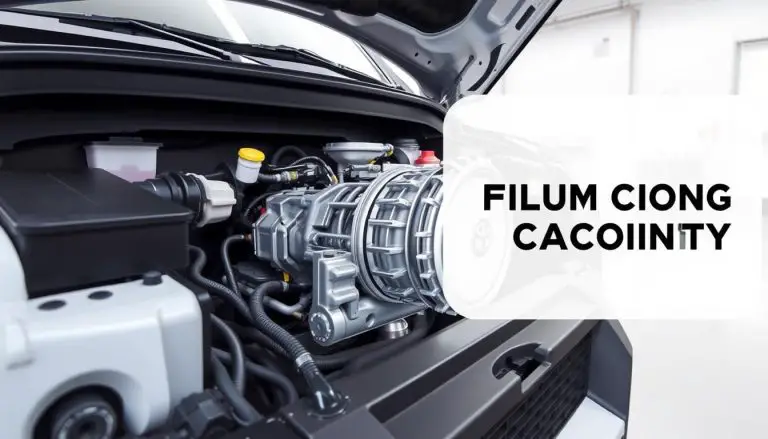Transmission issues can be a significant concern for vehicle owners, particularly those driving Toyota models. A transmission fault can lead to decreased performance, reduced fuel efficiency, and potentially costly repairs if left unaddressed.
Understanding the causes of transmission problems is crucial for effective diagnosis and repair. This article aims to provide a comprehensive overview of Toyota transmission faults, exploring the underlying reasons, diagnostic techniques, and repair strategies.
By delving into the intricacies of transmission issues, vehicle owners can better navigate the complexities of automotive maintenance, ensuring their vehicles run smoothly and efficiently.
Key Takeaways
- Understanding the causes of transmission faults is essential for effective diagnosis and repair.
- Transmission problems can lead to decreased vehicle performance and fuel efficiency.
- Proper diagnosis is critical for identifying the root cause of transmission issues.
- Repair strategies vary depending on the nature and severity of the transmission fault.
- Regular maintenance can help prevent transmission problems.
Understanding Toyota Transmission Systems
Understanding the different types of transmission systems used in Toyota vehicles is essential for diagnosing and repairing transmission faults. Toyota vehicles are equipped with various transmission systems, including automatic, manual, and Continuously Variable Transmission (CVT) systems.
Types of Toyota Transmissions
Toyota offers a range of transmission types to suit different driving needs and preferences.
Automatic Transmissions
Automatic transmissions in Toyota vehicles are designed for smooth and effortless shifting. They are widely used in various models, providing ease of use and comfort, especially in heavy traffic conditions.
Manual Transmissions
Manual transmissions offer drivers more control over gear shifting, allowing for a more engaging driving experience. They are typically used in performance-oriented models.
CVT Systems
CVT systems provide seamless acceleration by continuously adjusting the gear ratio. They are optimized for fuel efficiency and are commonly used in hybrid and compact vehicles.
Common Toyota Transmission Models
Toyota has developed several transmission models over the years, each with its unique characteristics and applications.
U-Series (U140E, U151E, U250E)
The U-Series transmissions are electronically controlled automatic transmissions used in various Toyota models. They are known for their reliability and smooth shifting.
A-Series (A340E, A750E)
The A-Series transmissions are another family of automatic transmissions used by Toyota, known for their durability and performance in a range of driving conditions.
K-Series CVTs
The K-Series CVTs are designed for efficiency and are used in various Toyota models, including hybrids and smaller vehicles. They provide smooth acceleration and improved fuel economy.
Common Symptoms of Toyota Transmission Problems
Toyota drivers should be aware of the common indicators of transmission problems to prevent further damage. Recognizing these symptoms early can help in addressing the issues before they escalate into more serious problems.
Warning Lights and Dashboard Indicators
The dashboard warning lights are among the first indicators of potential transmission issues. Two key lights to watch out for are:
Check Engine Light
The Check Engine Light can illuminate for a variety of reasons, including transmission-related problems. It’s essential to diagnose the issue using an OBD-II scanner to determine if it’s transmission-related.
AT Temperature Warning
The AT Temperature Warning light indicates that the transmission fluid temperature is too high. Elevated transmission fluid temperatures can lead to premature wear and potentially cause the transmission to fail.
Unusual Noises and Vibrations
Unusual noises and vibrations are other common symptoms of transmission problems. These can include:
Whining and Grinding Sounds
Whining or grinding sounds when shifting gears can indicate worn or damaged transmission components. These noises should not be ignored as they can signal serious issues.
Clunking During Gear Changes
Clunking or banging sounds during gear changes can suggest problems with the transmission’s mechanical components or its mounting.
Shifting Problems and Performance Issues
Issues with shifting gears or performance problems can also be symptoms of transmission problems. Common issues include:
Delayed Engagement
A delayed engagement when shifting into gear can indicate low transmission fluid levels or a failing solenoid.
Slipping Gears
Slipping gears can cause the engine to rev without the vehicle accelerating as expected. This can be due to worn-out clutch packs or bands.
Hard Shifting
Hard shifting or abrupt gear changes can be uncomfortable and may indicate problems with the transmission’s electronic controls or hydraulic system.
Toyota Transmission Fault: Common Causes, Diagnosis & Repair
Transmission faults in Toyota vehicles can arise from multiple sources, including mechanical, electronic, and fluid-related issues. Understanding these causes is essential for effective diagnosis and repair.
Mechanical Failures
Mechanical failures are a common cause of transmission faults. Two significant mechanical issues are:
- Worn Clutch Plates: Clutch plates that are worn out can lead to slipping transmissions and poor performance. Replacing worn clutch plates is crucial for maintaining smooth transmission operation.
- Damaged Torque Converter: The torque converter is a critical component that facilitates the transfer of power between the engine and transmission. Damage to this component can result in transmission faults, including vibrations and unusual noises.
Electronic Control Issues
Electronic control issues can also lead to transmission faults. Key problems in this area include:
- TCM Failures: The Transmission Control Module (TCM) manages the transmission’s operation. Failure of the TCM can lead to erratic shifting and other transmission problems.
- Sensor Malfunctions: Sensors provide critical data to the TCM. Malfunctioning sensors can cause the transmission to operate incorrectly, leading to faults.
Fluid-Related Problems
Fluid-related issues are another significant cause of transmission faults. These include:
- Low Fluid Levels: Insufficient transmission fluid can cause the transmission to overheat and malfunction.
- Contaminated Transmission Fluid: Dirty or contaminated fluid can compromise transmission performance. Regular fluid changes are essential to prevent this.
- Incorrect Fluid Type: Using the wrong type of transmission fluid can lead to compatibility issues and transmission damage.
Diagnosing and repairing these issues requires a comprehensive approach, including the use of diagnostic tools and a thorough inspection of the transmission system.
How to Diagnose Toyota Transmission Issues
To identify the root cause of Toyota transmission problems, a thorough diagnostic process is essential. Diagnosing transmission issues involves a combination of technical tools and practical tests.
Using OBD Scanners for Transmission Diagnostics
Modern Toyota vehicles are equipped with onboard diagnostics (OBD) systems that can be accessed using OBD scanners. These scanners can read transmission-specific codes and provide valuable insights into the transmission’s performance.
Reading Transmission-Specific Codes
Transmission-specific codes can indicate issues such as solenoid problems or sensor malfunctions. Understanding these codes is crucial for accurate diagnosis.
Interpreting Error Messages
Error messages retrieved from the OBD scanner need to be interpreted correctly to identify the root cause of the transmission issue.
Fluid Inspection Techniques
Inspecting the transmission fluid is a critical step in diagnosing transmission problems. The condition of the fluid can reveal a lot about the transmission’s health.
Checking Fluid Color and Smell
The color and smell of the transmission fluid can indicate contamination or degradation. Dark or burnt-smelling fluid is a sign of potential issues.
Testing for Contaminants
Checking for contaminants in the transmission fluid can help identify internal wear or damage within the transmission.

Test Drive Diagnostics
A test drive is an essential part of diagnosing transmission issues. It allows you to monitor the transmission’s performance under various driving conditions.
Monitoring Shift Patterns
During the test drive, pay attention to any irregularities in shift patterns, such as slipping or hesitation.
Evaluating Acceleration Response
Assessing how the vehicle responds to acceleration can help identify transmission performance issues.
| Diagnostic Method | Purpose | Indicators of Issues |
|---|---|---|
| OBD Scanner | Read transmission-specific codes | Error codes indicating solenoid or sensor issues |
| Fluid Inspection | Check fluid condition | Dark color, burnt smell, or contaminants |
| Test Drive | Monitor transmission performance | Irregular shift patterns, slipping, or hesitation |
DIY Transmission Maintenance and Minor Repairs
Maintaining your Toyota’s transmission can be done at home with the right guidance. Regular maintenance not only extends the life of your vehicle’s transmission but also improves its performance.
Transmission Fluid Change Procedure
Changing the transmission fluid is a crucial maintenance task. There are two primary methods: the drain and fill method and the fluid flush technique.
Drain and Fill Method
This method involves draining the old fluid and refilling with new fluid. It’s a simpler process that can be done at home.
Fluid Flush Technique
A fluid flush is more comprehensive, replacing the old fluid with new fluid completely. For specific guidance on Toyota CVT transmission fluid change intervals, you can refer to this resource.
Filter Replacement Steps
Replacing the transmission filter is another important maintenance task.
Pan Removal Process
To access the filter, you’ll need to remove the transmission pan. Be prepared for fluid spillage.
Gasket Installation
After replacing the filter, ensure the pan is properly sealed with a new gasket to prevent leaks.
Solenoid Cleaning and Replacement
Transmission solenoids control the flow of fluid. Cleaning or replacing them can resolve shifting issues.
Locating Transmission Solenoids
The location of solenoids varies by model. Consult your repair manual to find them.
Testing Solenoid Function
Use a multimeter to test the solenoid’s electrical function. Replace if faulty.
| Maintenance Task | Frequency | Benefit |
|---|---|---|
| Transmission Fluid Change | Every 30,000 to 60,000 miles | Improves transmission longevity |
| Filter Replacement | Every 50,000 to 100,000 miles | Enhances transmission performance |
| Solenoid Cleaning/Replacement | As needed | Resolves shifting issues |
When to Seek Professional Transmission Repair
If you’re experiencing transmission problems with your Toyota, understanding when to consult a professional is key to avoiding further damage. While some issues can be resolved with DIY maintenance, more complex problems require expert intervention.
Signs of Major Transmission Damage
Major transmission damage can manifest through various symptoms, including severe slipping, failure to engage gears, or loud grinding noises. If you notice any of these signs, it’s crucial to seek professional help immediately to prevent further damage to your vehicle’s transmission.

Finding a Qualified Toyota Transmission Specialist
When looking for a professional to repair your Toyota’s transmission, ensure they have experience with your vehicle’s make and model. Check for certifications and reviews to gauge their reputation and expertise.
Transmission Rebuild vs. Replacement Options
Deciding between a transmission rebuild and replacement depends on the extent of the damage. A rebuild can be more cost-effective, but a replacement might be necessary for severe damage.
Cost Comparison
A transmission rebuild typically costs less upfront, but consider the long-term reliability of the repair.
Longevity Considerations
A replacement transmission, while more expensive initially, may offer better long-term durability.
Expected Costs for Professional Repairs
The cost of professional transmission repairs varies widely based on the type of repair needed. On average, you can expect to pay between $500 to $3000 or more for complex repairs.
Preventative Maintenance to Avoid Transmission Failures
Preventative maintenance is crucial for extending the life of your Toyota’s transmission. By following a regular maintenance schedule and adopting good driving habits, you can significantly reduce the risk of transmission failures.
Recommended Maintenance Schedule
Adhering to a recommended maintenance schedule is vital for the longevity of your transmission. This includes:
Mileage-Based Service Intervals
Toyota recommends servicing your transmission at specific mileage intervals, typically between 30,000 to 60,000 miles. Check your owner’s manual for the exact schedule.
Severe Use Considerations
If you drive under severe conditions, such as frequent stop-and-go traffic, towing, or driving in extreme temperatures, you may need to service your transmission more frequently.
Driving Habits That Extend Transmission Life
Certain driving habits can significantly impact the lifespan of your transmission. Practicing proper warm-up procedures and towing best practices can make a big difference.
Proper Warm-Up Procedures
Before driving, especially in cold weather, allow your vehicle to warm up for a few minutes. This helps the transmission fluid reach its optimal operating temperature, reducing wear on the transmission.
Towing Best Practices
If you tow trailers or boats, ensure you’re doing so within the recommended limits for your vehicle. Overloading can put excessive strain on the transmission. For more information on identifying transmission issues, you can visit Jensen Auto Service.
Toyota-Specific Maintenance Tips
Toyota vehicles have specific maintenance requirements. Always refer to your owner’s manual for guidance on maintenance intervals and procedures.
| Maintenance Task | Mileage Interval | Severe Use Adjustment |
|---|---|---|
| Transmission Fluid Check | 30,000 miles | 15,000 miles |
| Transmission Filter Replacement | 60,000 miles | 30,000 miles |
| Transmission Service | 90,000 miles | 45,000 miles |
Conclusion
Understanding and addressing Toyota transmission faults is crucial for the longevity and performance of your vehicle. By recognizing common symptoms, such as unusual noises and shifting problems, you can diagnose issues early and prevent major damage.
Regular preventative maintenance, including transmission fluid changes and filter replacements, plays a significant role in avoiding transmission failures. By following the recommended maintenance schedule and adopting good driving habits, you can extend the life of your Toyota’s transmission.
Whether you’re dealing with a minor issue or a major transmission fault, knowing when to seek professional transmission repair is essential. By combining DIY maintenance with expert repairs when needed, you can ensure your Toyota continues to run smoothly and efficiently.
FAQ
What are the common symptoms of Toyota transmission problems?
Common symptoms include warning lights on the dashboard, such as the Check Engine Light and AT Temperature Warning, unusual noises like whining and grinding sounds, and shifting problems including delayed engagement, slipping gears, and hard shifting.
How do I diagnose Toyota transmission issues?
Diagnosis involves using OBD scanners to read transmission-specific codes, inspecting transmission fluid for color, smell, and contaminants, and conducting a test drive to monitor shift patterns and evaluate acceleration response.
What are the common causes of Toyota transmission faults?
Common causes include mechanical failures (worn clutch plates, damaged torque converter), electronic control issues (TCM failures, sensor malfunctions), and fluid-related problems (low fluid levels, contaminated transmission fluid, incorrect fluid type).
Can I perform DIY transmission maintenance and minor repairs?
Yes, you can perform DIY maintenance tasks such as changing transmission fluid, replacing the transmission filter, and cleaning or replacing transmission solenoids to help prevent transmission problems and improve vehicle performance.
When should I seek professional help for transmission repairs?
You should seek professional help if you notice signs of major transmission damage, such as severe slipping or failure to engage gears. A qualified Toyota transmission specialist can assess the situation and recommend the best course of action.
What is the difference between transmission rebuild and replacement options?
A transmission rebuild involves repairing or replacing damaged components, while a replacement involves installing a new or remanufactured transmission. The choice between the two depends on the extent of the damage and cost considerations.
How can I prevent transmission failures through maintenance?
Following the recommended maintenance schedule, practicing proper driving habits, and adhering to Toyota-specific maintenance tips can help prevent transmission failures and extend the life of your vehicle’s transmission.
What is the recommended maintenance schedule for my Toyota’s transmission?
The recommended maintenance schedule varies depending on mileage and driving conditions. Consult your owner’s manual or speak with a Toyota dealership or certified mechanic to determine the best schedule for your vehicle.


